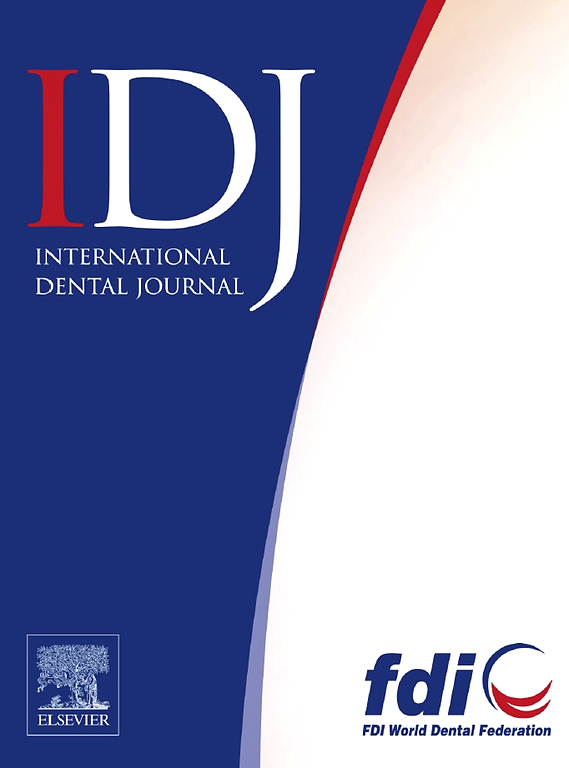Periodontitis and Oral Bacteria Related to Rheumatoid Arthritis: A Case-Control Study
IF 3.7
3区 医学
Q1 DENTISTRY, ORAL SURGERY & MEDICINE
引用次数: 0
Abstract
Introduction and aims
This study compared periodontal status and oral bacteria between rheumatoid arthritis (RA) patients and healthy controls (HCs), and examined the influence of oral bacteria on the association between periodontitis and RA.
Methods
In total, 85 patients with RA and 119 HCs were enrolled. The oral microflora DNA test was used to quantify the oral bacterial species detected in gingival crevicular fluid. Probing depth and the clinical attachment level of the periodontal ligament were taken as parameters of periodontal status. Height, body weight, medical history, family history of RA, lifestyle habits, and stress were evaluated using a self-administered questionnaire. Univariate and multivariate logistic regression analyses were conducted to assess the association between RA and periodontal status/oral bacteria.
Results
RA patients exhibited significantly greater probing depth than HCs. The HCs demonstrated higher abundances of Fusobacterium nucleatum subsp. polymorphum, Fusobacterium periodonticum, Campylobacter showae, Campylobacter gracilis, Eikenella corrodens, Streptococcus mitis, Streptococcus mitis bv 2, and Actinomyces naeslundii II. In forward stepwise multivariate analysis, the odds ratios (ORs) for RA were significantly higher for patients with a family history of RA, smokers, those with deep periodontal pockets, and those with a larger population of F. nucleatum subsp. animalis and Veillonella parvula. Patients with more Campylobacter gracilis had a significantly lower OR for RA.
Conclusion
A comparison of the oral bacteria of RA patients and HCs suggests that F. nucleatum subsp. animalis and V. parvula are involved in RA patients. However, there are still many unknowns about the relationship between oral bacteria and RA, and further research is needed.
与类风湿关节炎相关的牙周炎和口腔细菌:一项病例对照研究
前言与目的本研究比较了类风湿关节炎(RA)患者和健康对照组(hc)的牙周状况和口腔细菌,探讨口腔细菌对牙周炎与RA相关性的影响。方法共纳入85例RA患者和119例hc患者。采用口腔菌群DNA检测定量龈沟液口腔细菌种类。以探诊深度和牙周韧带临床附着程度作为牙周状态的指标。身高、体重、病史、类风湿关节炎家族史、生活习惯和压力使用自我管理问卷进行评估。进行单因素和多因素logistic回归分析以评估RA与牙周状况/口腔细菌之间的关系。结果ra患者探测深度明显大于hc患者。hc中有较高丰度的核梭杆菌亚种。多形菌、牙周梭杆菌、秀氏弯曲杆菌、细根弯曲杆菌、腐蚀艾肯氏菌、密氏链球菌、密氏链球菌bv 2和纳氏放线菌II。在逐步多变量分析中,RA的优势比(ORs)在有RA家族史、吸烟者、牙周袋深者和核梭菌亚种较多的患者中显著升高。动物和细小细孔菌。股薄弯曲杆菌较多的患者RA的OR明显较低。结论RA患者口腔菌群与hc患者口腔菌群的比较表明,具核梭菌亚群在RA患者口腔菌群中具有明显的致病性。类风湿关节炎患者与动物和细小弧菌有关。然而,口腔细菌与RA之间的关系仍有许多未知之处,需要进一步研究。
本文章由计算机程序翻译,如有差异,请以英文原文为准。
求助全文
约1分钟内获得全文
求助全文
来源期刊

International dental journal
医学-牙科与口腔外科
CiteScore
4.80
自引率
6.10%
发文量
159
审稿时长
63 days
期刊介绍:
The International Dental Journal features peer-reviewed, scientific articles relevant to international oral health issues, as well as practical, informative articles aimed at clinicians.
 求助内容:
求助内容: 应助结果提醒方式:
应助结果提醒方式:


